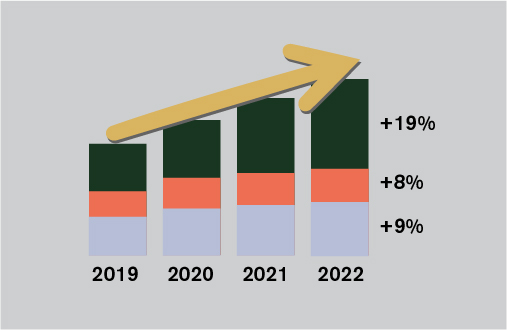Contact
Department of Aquatic Sciences and Assessment, Division of Environmental Organic Chemistry and Ecotoxicology

Analysing wastewater can reveal the usage of artificial sweeteners. A newly published study shows their consumption patterns in several Swedish cities.
Researchers recently published a study showing that the consumption of artificial sweeteners in Uppsala has increased since 2019.
- We see a yearly increase of 10-20% of the amount of sweeteners in wastewater. The range depends on which sweetener we are referring to. Our study included sucralose, acesulfame, and saccharin, says senior lecturer Foon Yin Lai.
Sucralose, acesulfame and saccharin are common substitutes for regular sugar to add sweet flavor. As they are not stored in the body they are popular in energy-reduced products.
The results of this study allow the researchers to point out that the consumption of artificial sweeteners can be at a worrying level.
- Although the study shows that overall levels of sweetener consumption are well below WHO and EU recommendations for the acceptable daily intake based on toxicological assessments, new research shows that consumption of artificially sweetened beverages can still be linked to health problems at levels well below this, says Foon Yin.
Combining this with the increasing sales figures of drinks sweetened with artificial sweeteners, the researchers want to draw people's attention to the findings. It also gives rise to further investigations.
As wastewater analyses provide a public health perspective, the results do not apply at the individual level. The health risk that the researchers can point to applies at the population level.
Analysing wastewater is an established way of monitoring public health and has been used to monitor the usage of illicit drugs and spread of Covid viruses. Now, researchers have used the same infrastructure to study the consumption of artificial sweeteners.
The study shows some localised differences between the Swedish communities from which the samples were taken. The communities of Östhammar, Knivsta, Enköping, Kalmar, Uppsala were included in the study. Samples from the same month were analysed in the study to obtain comparable data.

Figure 1. Diagram of the increased use of sweeteners in Uppsala. After the graphical abstract of the scientific study.
Inga Haalck, Anna Székely, Stina Ramne, Emily Sonestedt, Claudia von Brömssen, Elin Eriksson, Foon Yin Lai (2024). Are we using more sugar substitutes? Wastewater analysis reveals differences and rising trends in artificial sweetener usage in Swedish urban catchments, Environment International, Volume 190, 108814, https://doi.org/10.1016/j.envint.2024.108814